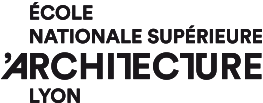A contribution to the study of the use of Stratoconception® for the design and the manufacturing of non-standard components for timber architecture
Contribution à l’étude de l’utilisation de la Stratoconception® pour la conception et la fabrication de composants non-standards pour l’architecture en bois
Résumé
Non-standard timber architecture explores the scope of technical and aesthetic opportunities for new uses that correspond to functional requirements consistent with contemporary environmental, social and economic issues. Recently adopted by the construction industry, but absent from the timber construction practices, additive manufacturing, which brings a range of processes, extends the existing limitations of the subtractive and formatting manufacturing methods in the ability to produce complex shapes and multi-functionalized architectural components. The Stratoconception® process shares the technical and material means of the timber construction industry and presents a great potential to be implemented in the common practices to develop non-standard timber architecture and components. In architecture, the Stratoconception® process is limited to the production of small-scale models and prototypes and has not yet been applied to the design and the manufacturing of functional components, used for structural purposes, in either small or large dimensions. The use of this process to produce prototypes or tooling for the industry implies that the Stratoconception® manufacturing process design is independent of the design of the objects themselves, which are intended to be produced by other manufacturing processes, whereas non-standard architecture tends to strengthen the link between the architectural design and the manufacturing techniques. This work presents the results of Stratoconception® “design to manufacturing” experiences carried out on architectural components. These experiences, combined with the bibliographical study, constitute a knowledge base, oriented towards the issues, the mechanisms, the problems and the limits identified of the use of Stratoconception® in architecture and timber construction practices. These experiences have highlighted the lack of flexibility and development of evaluation tools of the Stratoconception® production process of architectural components, as well as the interdependence between design and manufacturing. We have also identified the opportunities to apply the process to the design and the production of non-standard architectural components, especially the timber assembly of the gridshell or lattice structures and the walls. To achieve a design process that can be applied in the timber architecture and construction practices, we introduce a design for additive manufacturing by Stratoconception® method, that integrates the constraints and the opportunities of the process right from the part geometry design stage and fosters the iterative evolution of the design, guided by the results of evaluation engines that support the designer in his decision-making. The proposed method, implemented in design support tools, creates a digital information continuum that connects parametric design to digital manufacturing, guiding the designer towards solutions that meet feasibility and production rationalization criteria right from the early design phase of the architectural component’s geometry.
L’architecture non-standard en bois explore l’étendue des possibilités techniques et esthétiques pour de nouveaux usages répondant à des exigences fonctionnelles cohérentes avec les enjeux environnementaux, sociétaux et économiques contemporains. Récemment introduite dans le secteur de la construction, mais absente des pratiques de la construction en bois, la fabrication additive, qui regroupe un ensemble de procédés, étend les limites des moyens de fabrication conventionnels par la liberté formelle accrue et la multifonctionnalisation des composants architecturaux qu’elle permet. Le procédé de Stratoconception® présente un fort potentiel d’application pour le développement d’architectures et de composants non-standards en bois, présentant une forte capacité d’adaptation aux moyens techniques et matériels de la construction en bois. Le procédé de Stratoconception®, en architecture, se limite à la réalisation de maquettes et de prototypes de petites dimensions et ne s’applique pas, jusqu’à présent, à la conception et à la fabrication de composants fonctionnels à usage structurel de petites comme de grandes dimensions. L’utilisation de ce procédé pour la réalisation de prototypes ou d’outillages pour l’industrie implique que la conception du processus de fabrication par Stratoconception® est indépendante de la conception des objets eux-mêmes, destinés à être réalisés par d’autres procédés de fabrication, alors que l’architecture non-standard privilégie un renforcement du lien entre la conception architecturale et les techniques de fabrication. Ce travail présente les résultats d’expériences de « conception-fabrication » par Stratoconception® de composants architecturaux menées, qui forment, avec l’étude bibliographique menée, une base de connaissance, orientée vers des enjeux identifiés, des mécanismes, des problématiques et des limites de l’utilisation de la Stratoconception® dans les pratiques de l’architecture et la construction en bois. Ces expériences ont mis en évidence le manque de flexibilité et d’outils d’évaluation du processus de production de composants architecturaux par Stratoconception® ainsi que l’interdépendance entre la conception et la fabrication. Nous avons également identifier des opportunités d’applications du procédé pour la conception et la production de composants architecturaux non-standards, particulièrement les nœuds d’assemblages en bois de treillis tridimensionnels et les parois. Afin d’obtenir un processus de conception applicable dans les pratiques de l’architecture et de la construction en bois, nous introduisons une méthode de conception pour la fabrication additive par Stratoconception® intégrant les contraintes et les opportunités du procédé dès l’étape de conception de la géométrie de la pièce en favorisant une évolution itérative de cette conception, orientée par les résultats de moteurs d’évaluation accompagnant le concepteur vers des prises de décision cohérentes avec des critères définis. La méthode proposée, implémentée dans des outils d’aide à la conception, permet la mise en place d’une continuité informationnelle numérique liant une conception paramétrique à une fabrication numérique en orientant le concepteur vers des solutions respectant des critères de faisabilité et de rationalisation de la production dès la phase amont de la conception de la géométrie du composant architectural.
| Origine | Fichiers produits par l'(les) auteur(s) |
|---|


